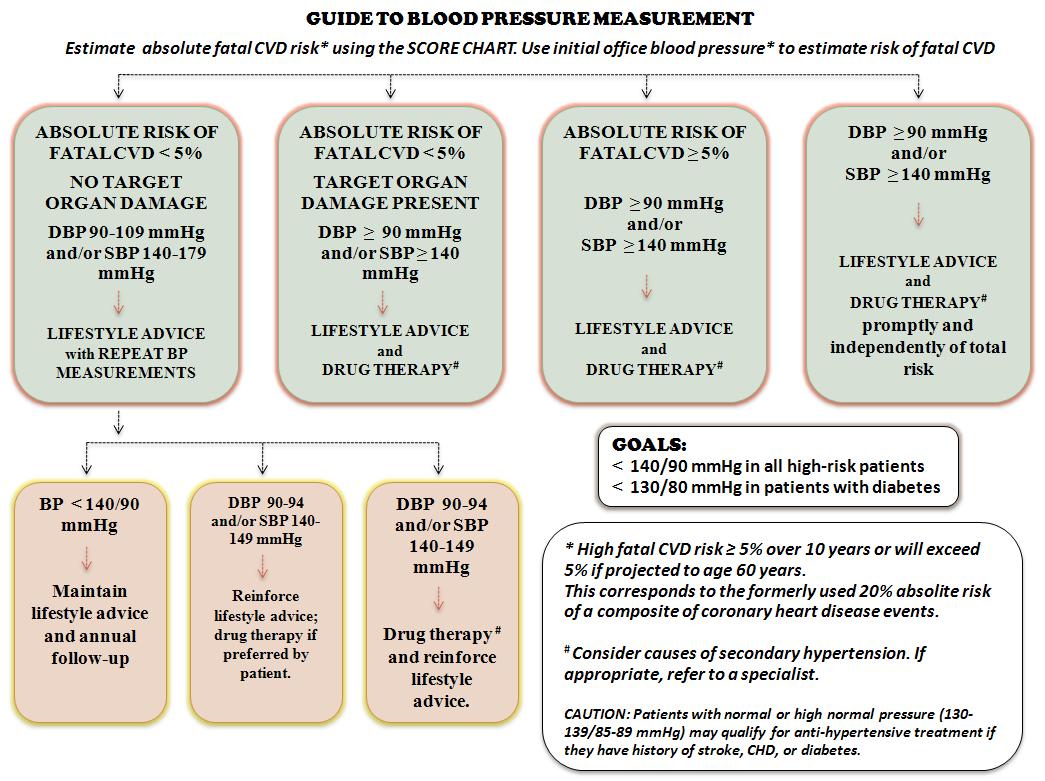Chronic stable angina treatment blood pressure control
|
Chronic stable angina Microchapters | ||
|
Classification | ||
|---|---|---|
| ||
| ||
|
Differentiating Chronic Stable Angina from Acute Coronary Syndromes | ||
|
Diagnosis | ||
|
Alternative Therapies for Refractory Angina | ||
|
Discharge Care | ||
|
Guidelines for Asymptomatic Patients | ||
|
Case Studies | ||
|
Chronic stable angina treatment blood pressure control On the Web | ||
|
FDA on Chronic stable angina treatment blood pressure control | ||
|
CDC onChronic stable angina treatment blood pressure control | ||
|
Chronic stable angina treatment blood pressure control in the news | ||
|
Blogs on Chronic stable angina treatment blood pressure control | ||
|
to Hospitals Treating Chronic stable angina treatment blood pressure control | ||
|
Risk calculators and risk factors for Chronic stable angina treatment blood pressure control | ||
Editor-In-Chief: C. Michael Gibson, M.S., M.D. [5] Phone:617-632-7753; Associate Editor(s)-In-Chief: Lakshmi Gopalakrishnan. M.B.B.S.
Overview
The risk of progression of atherosclerosis is proportional to the increase in elevated blood pressure, hyperglycemia and dyslipidemia. Hence, control of hypertension, hyperglycemia and other features of metabolic syndrome deserves special attention in the prevention of mortality and morbidity due to coronary artery disease. In patients with established CAD, concomitant diabetes and/or renal dysfunction, the blood pressure goal is 130/80-85 and the decision to lower blood pressure depends on the total cardiovascular risk and the extent of target organ damage.[1][2] Close monitoring and lifestyle changes may be indicated in low-risk patients without documented target organ damage. However, in high-risk patients with a sustained SBP of ≥140mmHg and/or DBP ≥90mmHg, the goal is to lower blood pressure less than 140/90 with the help of drug therapy in addition to life style modifications. Anti-hypertensive therapies that have shown to significantly reduce cardiovascular mortality and morbidity in patients with coronary artery disease include diuretics, beta-blockers, ACEIs, ARBs and calcium channel blockers.
Guide to Blood Pressure Management adapted from the European Task Force[1]
| “ |
 |
” |
ACC/AHA Guidelines- Cardiovascular Risk Factor Reduction- Blood Pressure Control (DO NOT EDIT)[3][4][5]
| “ |
Class I1. Patients should initiate and/or maintain lifestyle modifications such as weight control; increased physical activity; moderation of alcohol consumption; limited sodium intake; and maintenance of a diet high in fresh fruits, vegetables, and low-fat dairy products. (Level of Evidence: B) 2. Blood pressure control according to Joint National Conference VII guidelines is recommended (i.e., blood pressure less than 140/90 mm Hg or less than 130/80 mm Hg for patients with diabetes or chronic kidney disease). [6] (Level of Evidence: A) 3. For hypertensive patients with well established coronary artery disease, it is useful to add blood pressure medication as tolerated, treating initially with beta blockers and/or ACE inhibitors, with addition of other drugs as needed to achieve target blood pressure. (Level of Evidence: C) |
” |
Vote on and Suggest Revisions to the Current Guidelines
Sources
- The ACC/AHA/ACP–ASIM Guidelines for the Management of Patients With Chronic Stable Angina [3]
- TheACC/AHA 2002 Guideline Update for the Management of Patients With Chronic Stable Angina [4]
- The 2007 Chronic Angina Focused Update of the ACC/AHA 2002 Guidelines for the Management of Patients With Chronic Stable Angina [5]
- Guidelines on the management of stable angina pectoris: The Task Force on the Management of Stable Angina Pectoris of the European Society of Cardiology [7]
References
- ↑ 1.0 1.1 De Backer G, Ambrosioni E, Borch-Johnsen K, Brotons C, Cifkova R, Dallongeville J et al. (2003) European guidelines on cardiovascular disease prevention in clinical practice. Third Joint Task Force of European and Other Societies on Cardiovascular Disease Prevention in Clinical Practice. Eur Heart J 24 (17):1601-10. PMID: 12964575
- ↑ European Society of Hypertension-European Society of Cardiology Guidelines Committee (2003) 2003 European Society of Hypertension-European Society of Cardiology guidelines for the management of arterial hypertension. J Hypertens 21 (6):1011-53. DOI:10.1097/01.hjh.0000059051.65882.32 PMID: 12777938
- ↑ 3.0 3.1 Gibbons RJ, Chatterjee K, Daley J, Douglas JS, Fihn SD, Gardin JM et al. (1999) ACC/AHA/ACP-ASIM guidelines for the management of patients with chronic stable angina: executive summary and recommendations. A Report of the American College of Cardiology/American Heart Association Task Force on Practice Guidelines (Committee on Management of Patients with Chronic Stable Angina). Circulation 99 (21):2829-48. [1] PMID: 10351980
- ↑ 4.0 4.1 Gibbons RJ, Abrams J, Chatterjee K, Daley J, Deedwania PC, Douglas JS et al. (2003) ACC/AHA 2002 guideline update for the management of patients with chronic stable angina--summary article: a report of the American College of Cardiology/American Heart Association Task Force on Practice Guidelines (Committee on the Management of Patients With Chronic Stable Angina). Circulation 107 (1):149-58.[2] PMID: 12515758
- ↑ 5.0 5.1 Fraker TD, Fihn SD, Gibbons RJ, Abrams J, Chatterjee K, Daley J et al. (2007)2007 chronic angina focused update of the ACC/AHA 2002 Guidelines for the management of patients with chronic stable angina: a report of the American College of Cardiology/American Heart Association Task Force on Practice Guidelines Writing Group to develop the focused update of the 2002 Guidelines for the management of patients with chronic stable angina. Circulation 116 (23):2762-72.[3] PMID: 17998462
- ↑ Chobanian AV, Bakris GL, Black HR, Cushman WC, Green LA, Izzo JL et al. (2003) Seventh report of the Joint National Committee on Prevention, Detection, Evaluation, and Treatment of High Blood Pressure. Hypertension 42 (6):1206-52. DOI:10.1161/01.HYP.0000107251.49515.c2 PMID: 14656957
- ↑ Fox K, Garcia MA, Ardissino D, Buszman P, Camici PG, Crea F; et al. (2006). [url=http://www.ncbi.nlm.nih.gov/entrez/eutils/elink.fcgi?dbfrom=pubmed&tool=sumsearch.org/cite&retmode=ref&cmd=prlinks&id=16735367 [4] "Guidelines on the management of stable angina pectoris: executive summary: The Task Force on the Management of Stable Angina Pectoris of the European Society of Cardiology"] Check
|url=value (help). Eur Heart J. 27 (11): 1341–81. doi:10.1093/eurheartj/ehl001. PMID 16735367.